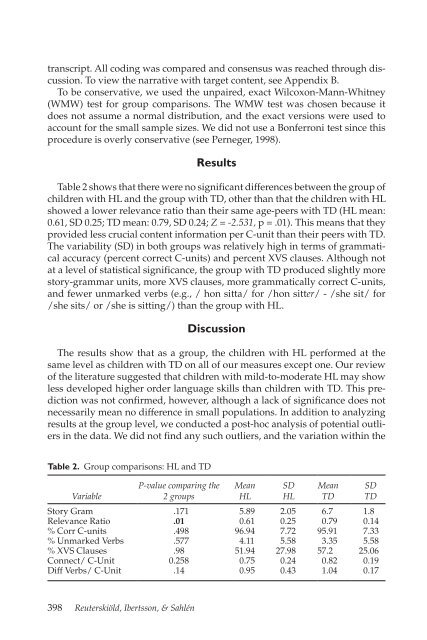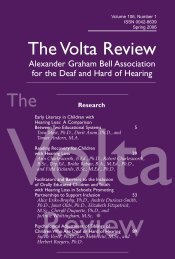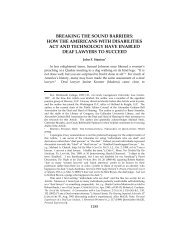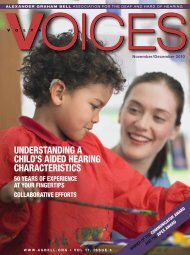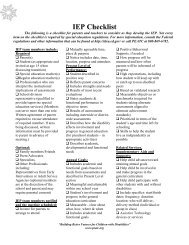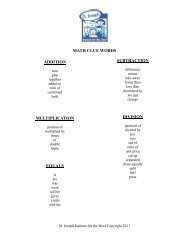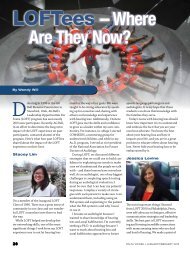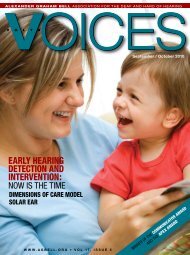Download this issue - Alexander Graham Bell Association
Download this issue - Alexander Graham Bell Association
Download this issue - Alexander Graham Bell Association
You also want an ePaper? Increase the reach of your titles
YUMPU automatically turns print PDFs into web optimized ePapers that Google loves.
transcript. All coding was compared and consensus was reached through discussion.<br />
To view the narrative with target content, see Appendix B.<br />
To be conservative, we used the unpaired, exact Wilcoxon-Mann-Whitney<br />
(WMW) test for group comparisons. The WMW test was chosen because it<br />
does not assume a normal distribution, and the exact versions were used to<br />
account for the small sample sizes. We did not use a Bonferroni test since <strong>this</strong><br />
procedure is overly conservative (see Perneger, 1998).<br />
Results<br />
Table 2 shows that there were no significant differences between the group of<br />
children with HL and the group with TD, other than that the children with HL<br />
showed a lower relevance ratio than their same age-peers with TD (HL mean:<br />
0.61, SD 0.25; TD mean: 0.79, SD 0.24; Z = -2.531, p = .01). This means that they<br />
provided less crucial content information per C-unit than their peers with TD.<br />
The variability (SD) in both groups was relatively high in terms of grammatical<br />
accuracy (percent correct C-units) and percent XVS clauses. Although not<br />
at a level of statistical significance, the group with TD produced slightly more<br />
story-grammar units, more XVS clauses, more grammatically correct C-units,<br />
and fewer unmarked verbs (e.g., / hon sitta/ for /hon sitt er / - /she sit/ for<br />
/she sits/ or /she is sitting/) than the group with HL.<br />
Discussion<br />
The results show that as a group, the children with HL performed at the<br />
same level as children with TD on all of our measures except one. Our review<br />
of the literature suggested that children with mild-to-moderate HL may show<br />
less developed higher order language skills than children with TD. This prediction<br />
was not confirmed, however, although a lack of significance does not<br />
necessarily mean no difference in small populations. In addition to analyzing<br />
results at the group level, we conducted a post-hoc analysis of potential outliers<br />
in the data. We did not find any such outliers, and the variation within the<br />
Table 2. Group comparisons: HL and TD<br />
Variable<br />
P-value comparing the<br />
2 groups<br />
Mean<br />
HL<br />
SD<br />
HL<br />
Mean<br />
TD<br />
Story Gram .171 5.89 2.05 6.7 1.8<br />
Relevance Ratio .01 0.61 0.25 0.79 0.14<br />
% Corr C-units .498 96.94 7.72 95.91 7.33<br />
% Unmarked Verbs .577 4.11 5.58 3.35 5.58<br />
% XVS Clauses .98 51.94 27.98 57.2 25.06<br />
Connect/ C-Unit 0.258 0.75 0.24 0.82 0.19<br />
Diff Verbs/ C-Unit .14 0.95 0.43 1.04 0.17<br />
SD<br />
TD<br />
398 Reuterskiöld, Ibertsson, & Sahlén


